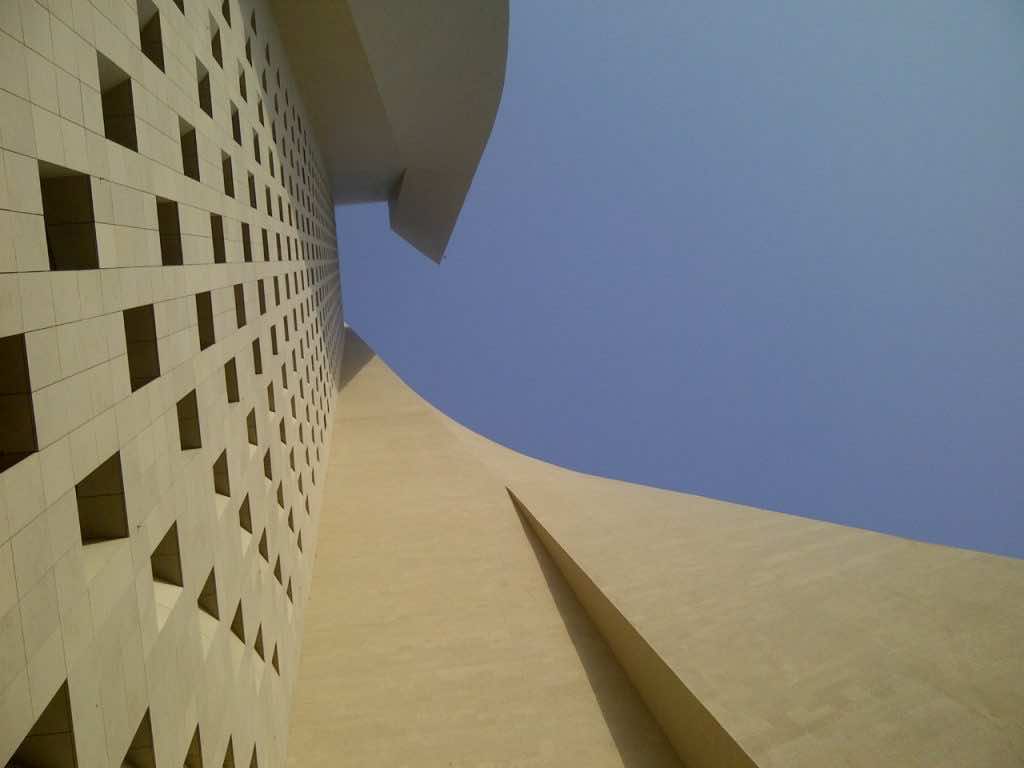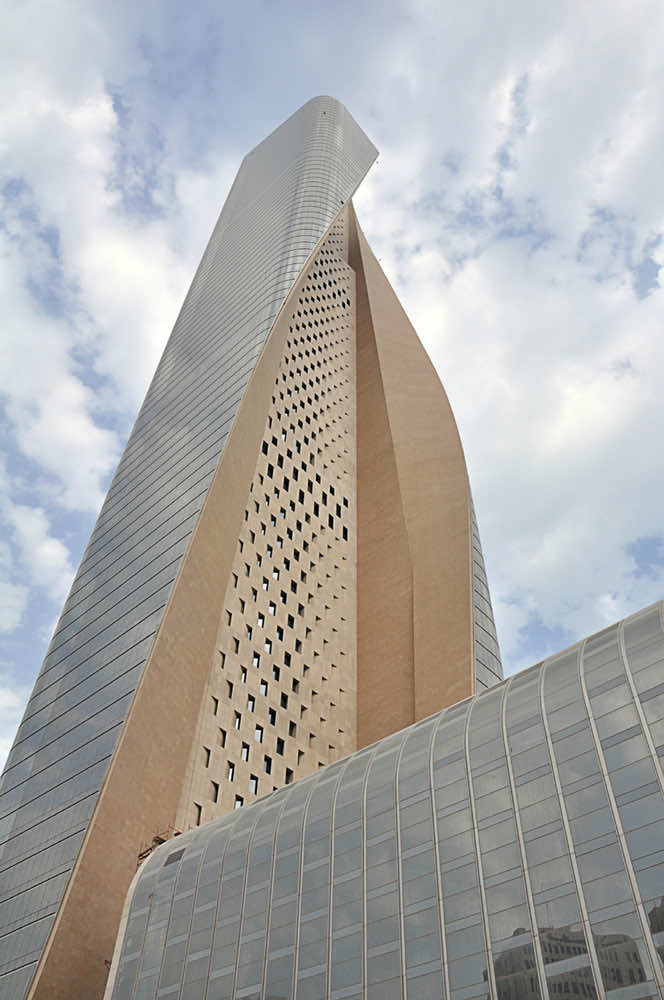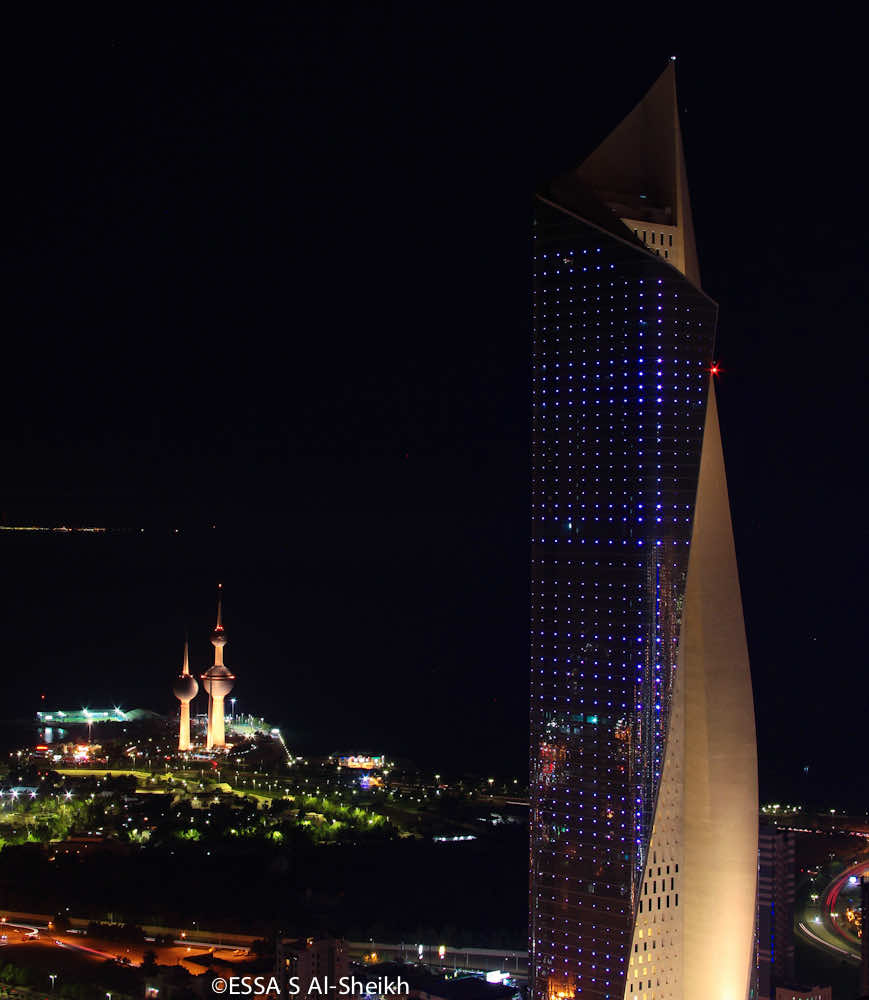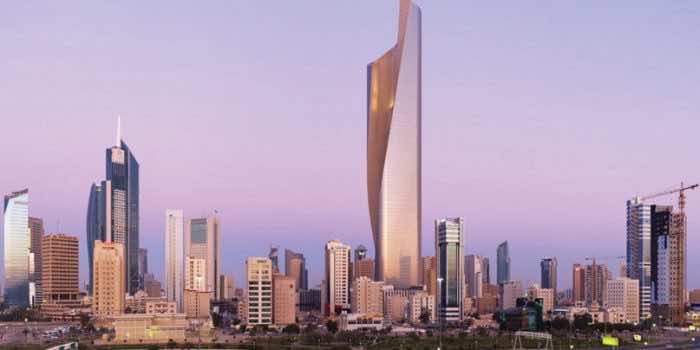The Al Hamra Tower is a 414 meters (1,358 ft) tall supertall skyscraper located in Kuwait City, Kuwait. Completed in 2011, currently it is the tallest building in Kuwait and the 36th tallest in the world. The 80-story office building is also the tallest building in the world to have a continuous stone façade.

Designed by Skidmore, Owings and Merril, the towers design exhibits great concern for the climatic realities of the site and the performance driven form of the tower is a result of this concern. That, combined with the desire to maximize views inspired the building’s asymmetrical shape, which calls to mind the traditional robes worn by Kuwaitis. Al Hamra Tower’s profile sets it apart from other high rise buildings and is symbolic of Kuwait’s emerging leadership in the global business industry. Its sculptural form is essentially a passive solar protection strategy. Faced with designing for brutal sun exposure, the designers chose to draw inspiration from Kuwait’s extreme desert conditions rather than concede to their constraining, if not deleterious effect. The asymmetrical form of Al Hamra Tower is generated by a simple operation of removal. Informed by solar analyses, SOM removed one quarter of the floorplate from the south façade, initiating at the southwest corner of the tower and rotating counter-clockwise over its height. This eliminated all south-facing office space while meeting the project’s programmatic requirements: 25,000-gross square foot floor plates, 40-foot lease spans, and 270° views of the water. A 24-meter-tall lobby serves as the main entrance to the tower. It connects building services to the city’s infrastructure and contributes to the structure’s stiffness.

The solid south wall is generated in order to decrease the solar radiation. Openings are based on the relationship of the envelope and its position in relation to the sun. The geometry of the interior wall is generated and responds to the need to minimize solar heat gain. This wall not only protects the building from critical environmental conditions, but also takes on the role of the structural spine of the building. The point at the apex of the tower not only resolves this complex geometry of the carved flared walls but also implies the continuation of the sculptural form infinitely upwards.
The Al Hamra tower has been the recipient of critical praise and multiple awards including the Emporis Skyscraper Award, International Architecture Award for best new global design and being featured in TIME magazine’s best new inventions of the years.



